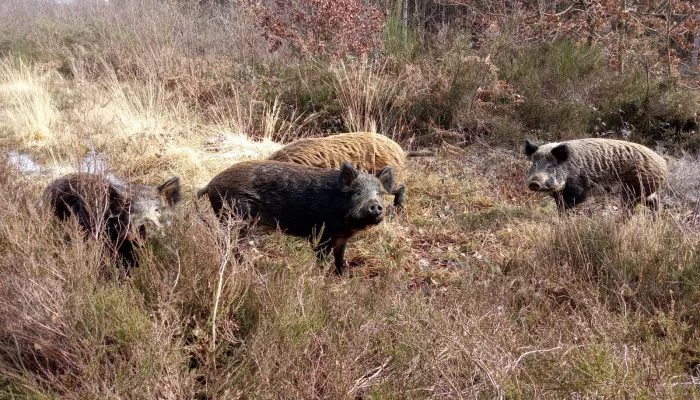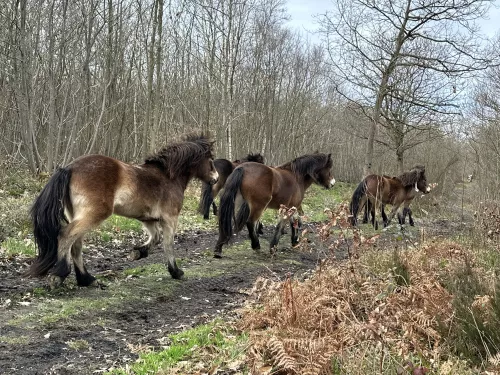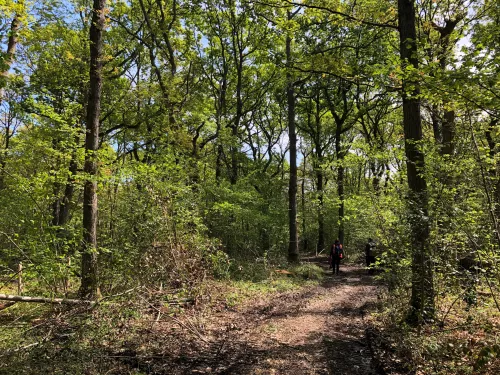
Longhorn cattle
Longhorn cattle can be many colours but they are almost always brindle (splattered/stripey) with a white line down the spine. They have long backs and can have very impressive horns.

These pigs are as close as you can get to the wild boar and also, despite being a domesticated version of this wild species, share many of its traits.
Shy and elusive, you are more likely to see signs of an Iron-Age pigs' work than the animals itself. Naturally a woodland species, they use their powerful noses to turn over compacted and damaged soil. This allows in oxygen and light, encouraging new growth and breaking up thick mats of dead leaves and stems.
Unlike all of our other animals, pigs aren’t herbivores or prey animals. These are omnivores who are happy to take other animals for food if they get the chance. They play an important role in the natural ecosystem. Not only do they plough up the ground, providing space for rare ‘arable’ wildflowers, tree seedlings and food for insect-hunting birds, in the past they would also have tidied away dead and dying animals, preventing disease from spreading.

Longhorn cattle can be many colours but they are almost always brindle (splattered/stripey) with a white line down the spine. They have long backs and can have very impressive horns.

Find out about Exmoor ponies and why we use them in conservation.

The Wilder Blean bison family have now been joined by cattle, ponies and pigs, all of which bring their own ecological benefits to the ancient woodland in West Blean and Thornden Woods.